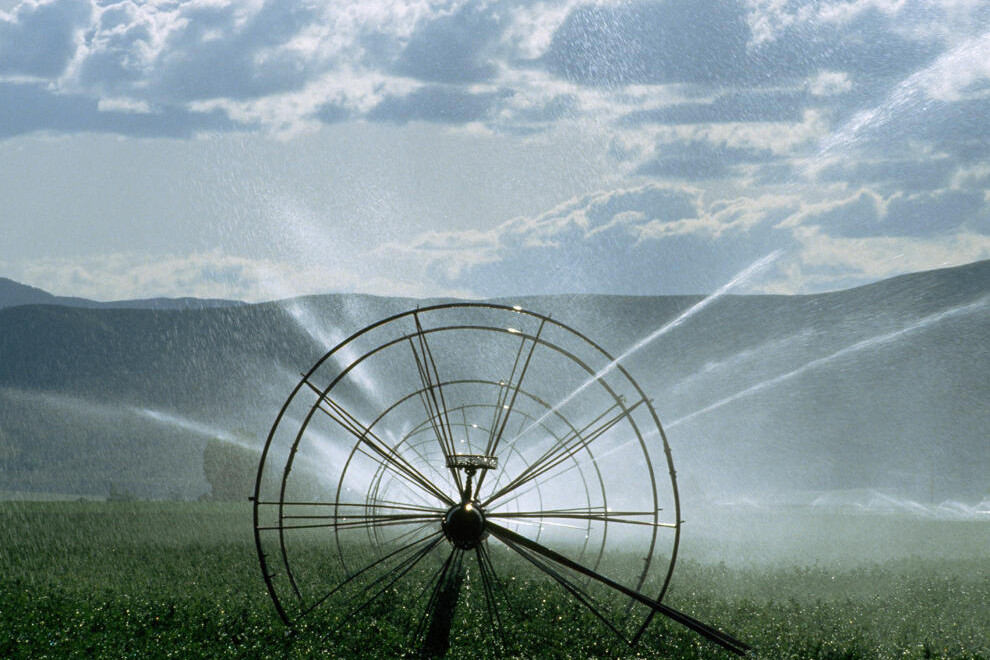Agriculture
24 October, 2023
Irrigation aids environment
WATER distribution across northern Victoria brought environmental benefits, Yarrawalla’s Tom Smith has told the Murray River Group of Councils. The agriculture veteran told the group that irrigation had more significant, positive impact for the...

WATER distribution across northern Victoria brought environmental benefits, Yarrawalla’s Tom Smith has told the Murray River Group of Councils.
The agriculture veteran told the group that irrigation had more significant, positive impact for the environment than water buybacks in the Murray system.
Tom said: “Sure, mistakes have been made along the way and land degraded due to what we see now as undesirable circumstances, but we have learned, degraded land is improving all the time and we plant trees plus more where we previously lost them due to excessive water.
“Creeks and water lines are looking healthy again. Drainage lines and reuse systems are in place to assist with this rejuvenation.”
Murray River Group, including Loddon Shire, launched #PushbackBuybacks campaign a fortnight ago to keep local and affordable Australian-grown food on tables by stopping Federal Government’s the Water Amendment (Restoring Our Rivers) Bill 2023 from becoming law.
In a statement received on Tuesday from Loddon Shire, Murray River Group chair Cr Rob Amos (Camapaspe Shire) said the Bill proposed changes to the Murray Darling Basin Plan that would reinstate water buybacks from farmers, putting livelihoods and communities at risk, and adding to cost-of-living pressures on Australian households.
“Extensive research and our collective experience tell us that water buybacks have dire socio-economic consequences,” Cr Amos said.
“Last time, they caused the loss of 1600 jobs, the closure of a milk factory and increased farming risk across our region. Our communities are only just getting back on their feet after the pandemic, fires and floods. The reintroduction of water buybacks would seal the fate of our vulnerable agricultural industries and further decimate our fragile regional communities.
“The proposed changes would also put at risk one of the nation’s largest food bowls.”
“The fresh produce Australian families love, from farm-fresh milk and cheese to all kinds of fruit and vegetables, are mostly grown along the Murray River and its tributaries.
“It’s vitally important that we protect our food-growing areas and the right of all Australians to have access to affordable fresh Australian-grown produce.”
Mr Smith said irrigation in the region helped flora and fauna thrive.
“When I look and listen at our farm I hear the chorus of thousands of frogs. Without irrigation they wouldn’t be there. Without the frogs, no food for the snacks of birds of prey,” he said.
“I see the hundreds of wild ducks, ibis and other birds that we feed on our property. Without irrigation there would hardly be any, if any.
“I saw around 40 spoon bills on one occasion fly from my reuse system. Without the extra waterways we create they would not have the food source for the numbers we now have exist.”
Murray River Group says it supports the environmental outcomes the Australian Government aims to achieve through the Basin Plan but believes there are better alternatives to buybacks, such as the water-saving and efficiency projects underway at Hattah Lakes and Gunbower Forest as part of the Victorian Murray Floodplain Restoration Project.
“We have put the research and the concerns of our communities to the Australian Government many times over the last decade, including as recently as May this year when we met with the Minster for Environment and Water Tanya Plibersek,” Cr Amos said.
“Unfortunately, our pleas to consider the triple bottom line of social, economic and environmental impacts, instead of single-mindedly focusing on water targets only, continue to be disregarded.”